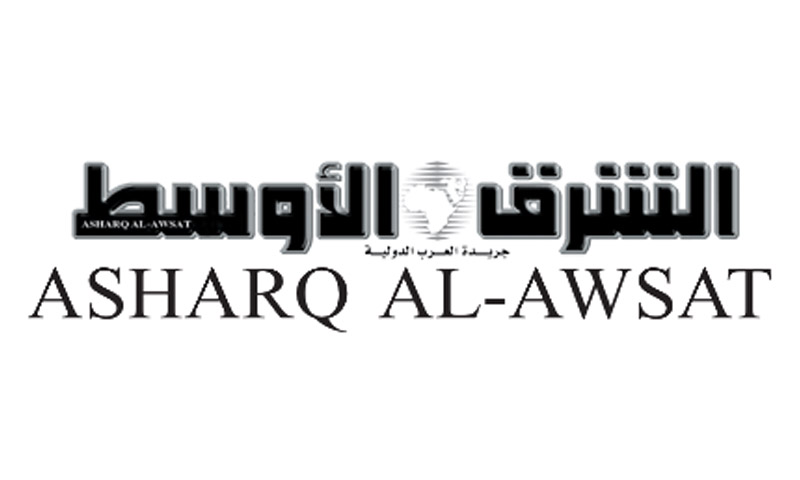
Citizen Journalism in Syria

Syrian citizen journalists play their part to bring down the Assad regime
 Cairo, Asharq Al-Awsat—From the onset of the Syrian revolution in March 2011, the al-Assad regime imposed a media blackout in an effort to hinder the reporting of impartial news from the ground. This blackout has paved the way for the emergence of a pro-revolutionary citizen journalism movement, as an alternative media that caters to the needs of citizens living in dangerous areas, by reporting what is actually happening on a daily basis. This new media is being operated mainly be the revolutionary youth, keen to send their voices to communities that are currently being subjected to bombardments.
Cairo, Asharq Al-Awsat—From the onset of the Syrian revolution in March 2011, the al-Assad regime imposed a media blackout in an effort to hinder the reporting of impartial news from the ground. This blackout has paved the way for the emergence of a pro-revolutionary citizen journalism movement, as an alternative media that caters to the needs of citizens living in dangerous areas, by reporting what is actually happening on a daily basis. This new media is being operated mainly be the revolutionary youth, keen to send their voices to communities that are currently being subjected to bombardments.
Recently, after four months of continuous work, following the government forces’ destruction of an Aleppo communications tower after opposition fighters entered the city in July 2012, and the subsequent disruption of all radio waves emanating from the city and surrounding area, “Nasa’im Souria” radio began broadcasting. This station was established by a group of university students and staff from the former official broadcasting stations of Aleppo, northern Syria, in order to send their voices out to communities living in the shadows.
The station operates with just a few lightweight radio and audio devices, laptops, connecting black cables and a small wireless radio tower on the roof of a building crowded with satellite dishes. The radio cable is connected to the small tower from the bathroom window of an empty apartment, and through a skylight in the roof.
Nasa’im Souria broadcasts in the city of Aleppo and the surrounding area, providing the most important news about the political situation and events on the ground in Aleppo and Syria in general. It also provides information on the weather, foreign exchange rates for the collapsed Syrian pound, and the price of flour and fuel, which has become a concern for all Syrian citizens who are watching prices rise day after day. In its news briefings, Nasa’im Souria also directs its listeners towards the nearest markets where food is available at lower prices. These markets are located in “liberated” areas controlled by Syrian opposition fighters, whilst the markets under the protection of government forces tend to have higher prices.
According to the station’s director of broadcasting, Reem al-Halabi, who opted to use this false name in her interview withAsharq Al-Awsat for fear of arrest: “the idea for a radio station in Aleppo and its surrounding area emerged four months ago, when all radio services in Aleppo were cut off after they were targeted by the regime’s forces”.
Al-Halabi disclosed that around 40 men and women are working to broadcast radio services in Aleppo, operating under false names for security reasons and out of fear of arrest, especially the presenters and sound engineers whose names are already well known from their days working for official and semi-official stations. She revealed that the staff of Nasa’im Souria are still awaiting an official reaction from the al-Assad regime, which is fiercely fighting against free speech.
In an introductory statement on its website, Nasa’im Souria is defined as: “A radio station broadcasting on FM – and via the live broadcast link on this website – to the city of Aleppo and its surrounding areas, after all official broadcasts were ceased. The station is also working to deliver a voice to the rest of the provinces of the beloved land of Syria. Nasa’im Souria does not adopt certain political or religious ideas; it is independent of any third party and does not adhere to the discourse of any political or ideological movement. It is the work of several university students and media figures in the city of Aleppo”.
Reem al-Halabi indicated that the station’s staff are “trying to bring all areas of Aleppo and the province together through the rapid spread of news. We are trying to educate the citizens politically and culturally after the decline in living conditions and services such as electricity, internet and communications, and communities becoming isolated from each other and the outside world”.
It is no secret for anyone listening to this station that its political or media orientation sides with the popular uprising against the Bashar al-Assad regime, and that it is working under the principle of “getting under its skin”, although this is not openly acknowledged by its staff.
In light of this objective, Nasa’im Souria offers multiple programs and a varied schedule. For example, the program entitled “Hai hiya al-huria ali badna yaha?” discusses the meaning of freedom and how it should be used both materially and morally with respect to the ideas of others, what freedom means in secular and Islamic terms, and the concept of freedom of expression without fear. There is also a section called “Laqmat aish”, which seeks to assist people in dealing with the circumstances the country is going through, given the lack of food, fuel and electricity, so that the Aleppo resident can assess his available resources. Another program, “Thura wa thuwar”, discusses the revolutions of the world and their repercussions, whilst another focusses on civil defense training, in the event of an aerial or artillery bombardment. Finally, there is the satirical segment “Yaomiyat mowattan halabi”, delivered in the Aleppo accent.
Reem al-Halabi added: “This experimental launch is intended to raise the profile of the station and attract the largest number of listeners via the airwaves and the internet”. She added that the number of broadcasting hours was increasing gradually, in accordance with the security situation.
Nasa’im Souria radio seeks to clarify the facts on the ground, given that the Syrian government, in its press conferences, only invites state channels, along with those from Iran, Russia and China as well as some foreign stations, which are not allowed to operate inside the country except under the orders of the relevant government and security bodies.
The Nasa’im Souria director revealed that the station also airs several special programs, focusing for example on the situation of refugees and internally displaced Syrians. The station also provides opinion polls, an explanation of revolutionary terms and concepts, and examines the different approaches and contradictions between global regimes, revolutionary or otherwise. Reem al-Halabi believes it is the function of the media to educate the Aleppo community. She added that the radio is vital for people to stay in touch and find out what is happening in their local environment and surroundings, especially after all other means of transmitting important and necessary information have been cut off.
In addition to the Aleppo radio service, there are several other private radio stations in Syria such as “al-Sham FM”, “Radio Arabesk” and “Sawa”, the latter of which enjoys a larger public audience than others since it broadcasts across the country. These stations offer music as well as news, and remain distanced from the official bulletins issued by government radio.
As for the printed press, the magazine Syrian Jasmine has emerged as a result of the popular uprising, with a revolutionary and cultural slant. Its first issue featured stories about the sufferings of women in Syrian prisons, after the role they played in initial relief and medical efforts nearly 21 months ago.
Syrian Jasmine is run by 7 women in the city of Aleppo, with various roles being distributed among them in accordance with their areas of expertise, from production and editing to drafting field reports.
The magazine printed 1,000 copies of its first issue in Turkey, which was made up of 11 pages. 250 copies were distributed within the Sura camps in Turkey, whilst the rest were distributed in Syria. The magazine gave an account of conditions for female prisoners in Syria in the 1980s, in addition to an eyewitness account of a modern-day female prisoner’s nights in solitary confinement, and her treatment at the hands of the intelligence services and prison wardens. The first issue also told the story of a Syrian girl working as a nurse in a field hospital in Aleppo, whose brother died on her watch, but nevertheless she passionately continued her work.
Although there is less risk involved for a magazine editorial board compared to a radio crew, given that the former can write privately from home, the distribution of the magazines is no less difficult than a radio broadcast, as revolutionary activists are constantly under the regime’s scrutiny.
Yet Syrian Jasmine is not alone; there are now numerous revolutionary publications, each with a free editorial policy that the Syrian citizen has not known for nearly four decades.
The weekly publication Enab Baladi is run by a small group of young amateurs who have no prior journalistic experience (as they are keen to point out on their social networking page). Nevertheless, they are keen to make an effort to show a different side to the Syrian revolution, and participate in the free space it has created as an arena for their thoughts.
The publication is issued from the Darayya district of Damascus Governorate, and the name Enab Baladi (The Grapes of My Country) was chosen for several reasons. Darayya has long been synonymous with grape cultivation, its symbolism provides a link to the land, and the grape itself, with its different varieties, serves as a metaphor for the diversity of attitudes and ideas within Syria.
The magazine, which is published weekly, is extremely diverse. There are sections on politics, economics and other miscellaneous areas. Priority is given to field developments in Darayya and beyond, in addition to news of detainees and deaths, whilst also providing an outlet for the views of young people.
Meanwhile, the magazine Souria Bada Huria, printed weekly, is an independent political and cultural publication. It is concerned with the affairs of the Syrian revolution whether in the field or at a theoretical level, and documents the events on both sides. It also provides the views and analysis of intellectuals.
The planning for this particular magazine began in mid-October 2012, with the first release 2 weeks later, consisting of 12 pages. A number of well-known political activists have so far contributed, such as Suheir Atassi, vice president of the Syrian National Coalition, along with the activist Molham al-Droubi, in addition to various young people interested in the media. The magazine has rapidly developed to the extent that today more than 42 issues have been published, with contributions from a large number of professional writers and editors, and young people whose talent has been born from the womb of the revolution. As a result,Souria Bada Huria has become more specialist and versatile at the same time. There is also an online publication updated on a daily basis, whilst around 700 copies of the print version are distributed between Homs, Jarablus and Saraqib, and soon in Hama and Damascus.
Souria Bada Huria has also published several special supplements, most notably a special feature examining the achievements of Syrian women during the revolution, in addition to an annual publication in association with al-Waref Institute for Humanity Studies in Washington.
Souria Bada Huria’s slogan is “freedom today and tomorrow”. The writers, with their predominantly young voice, are not only calling for political freedom represented by the fall of the al-Assad regime, but they are also looking towards the political, economic, cultural, social and even religious freedom of the future Syria.
if you think the article contain wrong information or you have additional details Send Correction
-
Follow us :
Most viewed
- 311 casualties among government forces and civilians in Syrian coast
- Al-Sharaa and Abdi reach agreement on merger of SDF into Syrian state
- Syrian Defense Ministry appoints "Abu Amsha" as Hama Brigade commander
- Did Syrian state fall into coastal ambush?
- Rights organization documents government and civilian deaths in Syrian coast

















 A
A
A
A
A
A


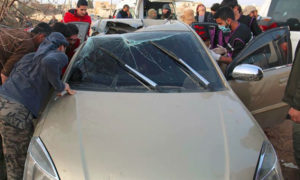
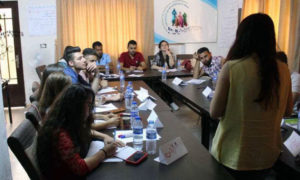
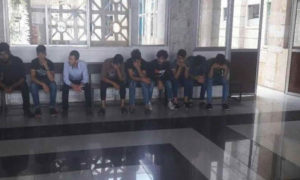
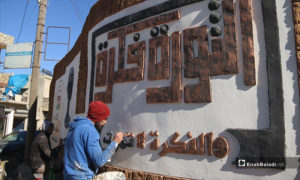
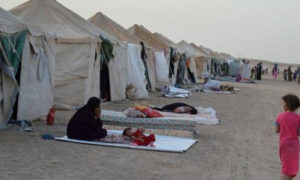
 More Media Coverage
More Media Coverage